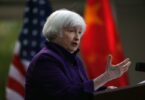The recessionary cycle which was inherited from the previous two governments has further worsened during the past 10 months which may culminate in the state of depression in the economy. But the incumbent government has adopted an oblivious attitude towards it. Agriculture production has stagnated and the productivity of industrial sector has decreased despite the incentives given to export products manufacturing industries. The large scale manufacturing index has become negative.
The slowdown in the industrial sector will impact the performance of service sector like banking, shipping, insurance and exports. The recession has already hit business activities by almost wiping out profit margins in the retail and wholesale trade. It will lead to either bankruptcy of closure of business houses.
Agriculture is the mainstay of economy which still contributes 21 percent to the gross domestic product and bulk of Pakistan exports include primary commodities like wheat, rice, cotton and fruits. It was the spectacular growth rate of this sector in 1960s and income generated in it that gave a big push to the sustained economic growth of over 8 percent in the industry. The miracle in the agriculture sector had been achieved by providing better variety of imported seeds and evolving high yield local varieties in the agriculture research centers; availability of inexpensive fertilizer and water availability on nominal rate of Abiana; and free of cost insecticides spray on standing crops by the government. Now the farmers cannot use adequate quantity of expensive fertilizers and are dependent on sowing genetically modified costly hybrid seeds and bear the exorbitant cost insecticides spray. The once fully functional agriculture research centers have been made redundant.
The industry was destroyed first by nationalist ion policy of private enterprises in 1070s which choked the growth of entrepreneurial class. And then by eroding the tax culture and resorting to regular tariff hikes of electricity and gas and making shady purchase agreements for thermal power generation instead of hydel and wind by successive elected governments. Import substitution and raw material producing industry was not encouraged and technology improvement was neglected which made the industry of both exports and consumers’ products non-competitive. The mess created by the previous governments has confused the incumbent one how the economy can be put on the path of revived and then turnaround. This explains the induction of global donors’ agencies technocrats in cabinet and central bank.
The government has hinted to generate revenue of over Rs. 600 billion in the next fiscal year by levying new taxes and raising the rates of existing ones. But the World Bank recent report on Pakistan’s revenue mobalisation indicates the potential to increase tax receipts without imposing new taxes or increasing the rates of already imposed ones. The report reveals that tax collection target can reach to 26 percent of the GDP if tax compliance is increased to 75 percent. It shows that tax authorities capture half of revenue potential because of slackness and corrupt practices. The Prime Minister and former finance minister had expressed the resolve to reform the Federal Board of Revenue but it boiled down to the transfer of its chairman without fixing the high-ups of Inland Revenue Services Department. It is a moment of introspection for the present government to study the available economic models which proved instrumental in steering out the economies of a number of countries from recession and even from the state of depression to the booming stage.






